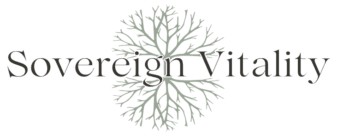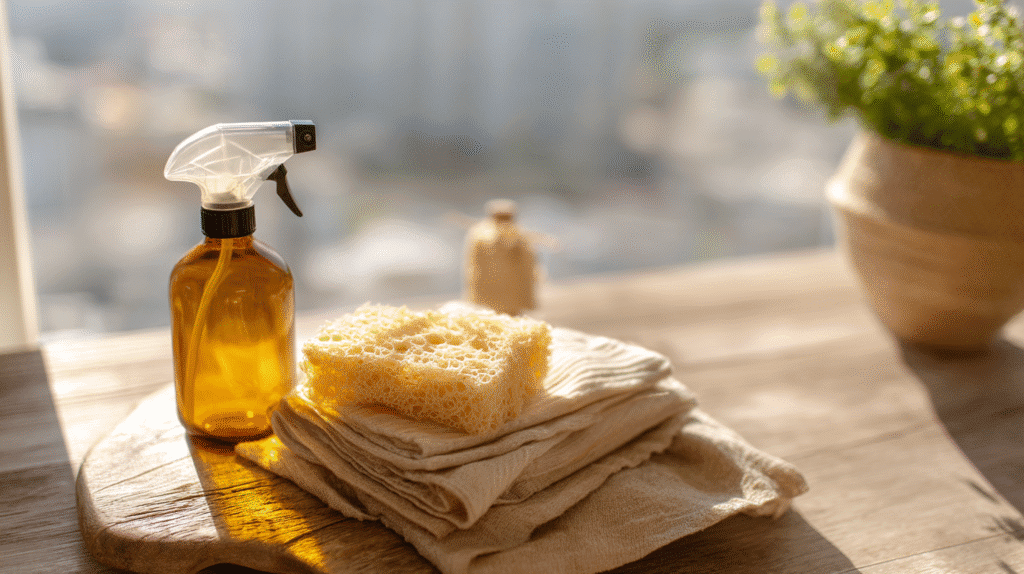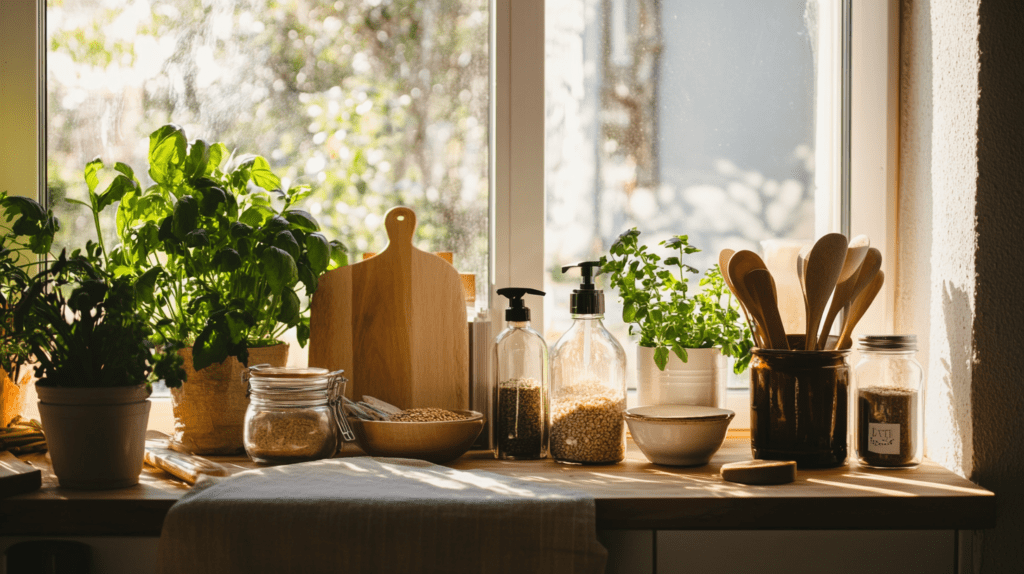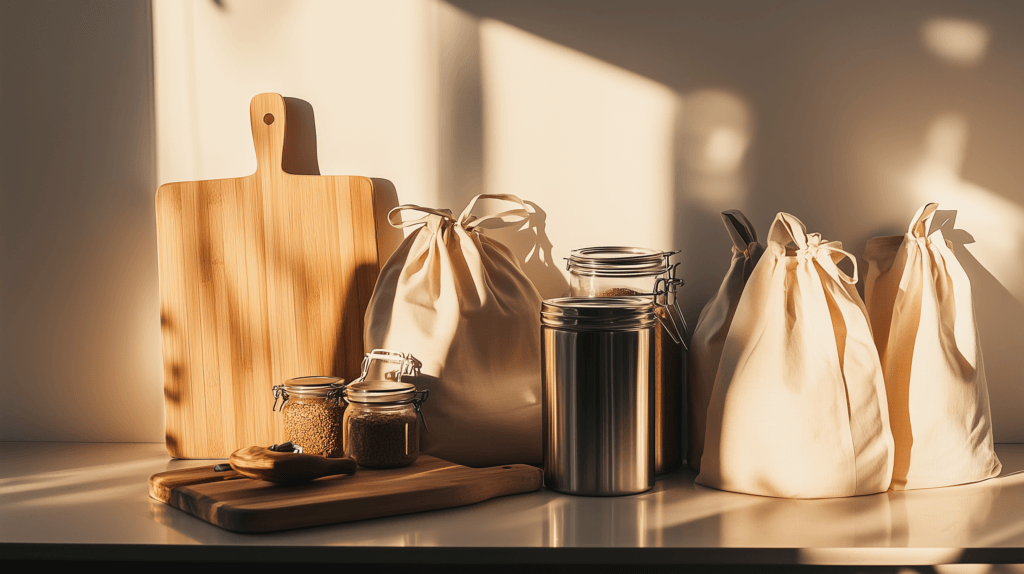This post may contain affiliate links, including those from Amazon Associates. If you make a purchase through these links, I may earn a commission at no additional cost to you. Learn more about our affiliate policy.
I used to think lemon-scented meant clean, how about you?
Opening a bottle and catching that artificially fresh fragrance immediately tricked me into believing my home was sparkling and safe.
But everything changed one afternoon when I found myself coughing uncontrollably after scrubbing down my bathroom. The scent of chemical cleaners, once comforting and familiar, had suddenly become overwhelming and suspicious.
If you’re anything like me – health-conscious, maybe a little anxious about hidden toxins, and feeling bombarded with confusing claims – you’re not alone.
Like you, I wanted clarity. I needed reassurance that I was protecting my family and pets from harmful chemicals lurking in everyday products.
Shifting to a non-toxic cleaning routine doesn’t have to be complicated or stressful. In fact, dedicating just one intentional weekend can profoundly transform your home environment.
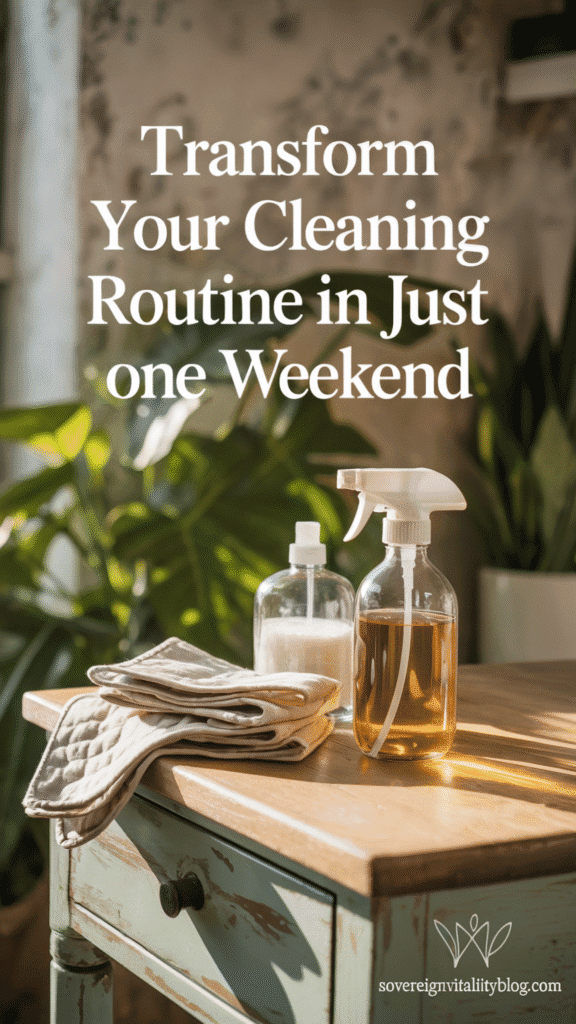
Why Conventional Cleaners Are More Harmful Than You Think
The reality about conventional cleaning products is sobering.
Many commonly used cleaners contain chemicals proven to impact our health negatively and compromise our environment. Ingredients like ammonia, chlorine bleach, synthetic fragrances, and phthalates often hide behind pleasant labels promising “clean” and “fresh.”
Exposure to these substances has been linked to numerous health issues from respiratory irritation and allergic reactions to hormone disruption and even chronic conditions over time.
Pets and children, who spend more time closer to floors and other surfaces, are particularly vulnerable. Beyond personal health risks, the environment suffers too. Chemicals from conventional cleaners wash down our drains, polluting waterways and harming wildlife.
Here’s a quick glance comparing what’s typically found in conventional cleaners versus a natural swap:
| Conventional Cleaners | Natural Swaps |
|---|---|
| Ammonia-based glass cleaner | Vinegar and water solution |
| Bleach disinfectants | Hydrogen peroxide spray |
| Synthetic fragrance sprays | Essential oil mist |
| Chemical-laden toilet cleaners | Baking soda and castile soap scrub |
Choosing a chemical-free living approach not only creates a safer home but also contributes to a healthier planet. A truly a win-win situation!
What To Toss, What To Keep
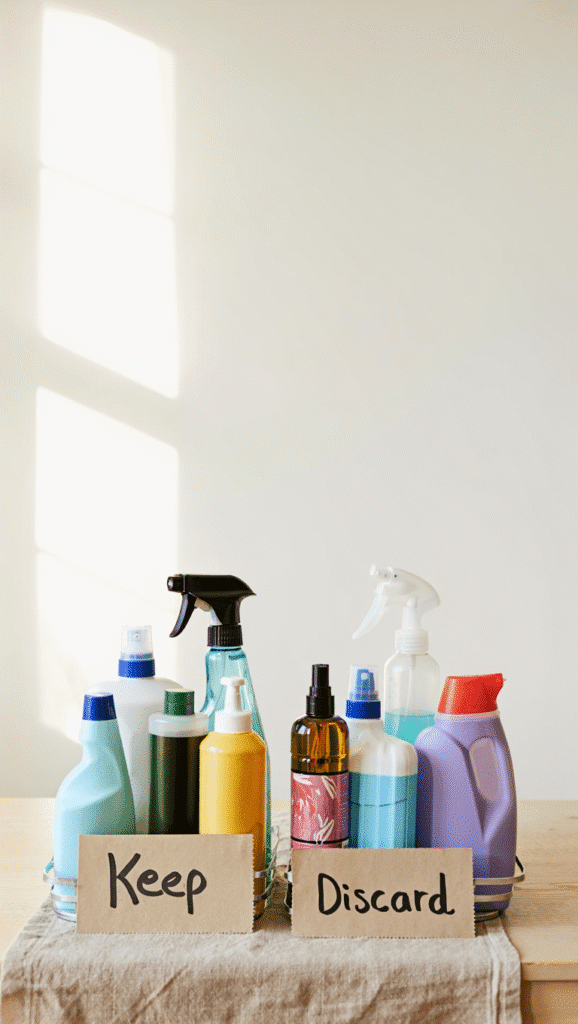
Before diving into new eco-friendly cleaning products, let’s first clear out the old. Start your weekend by taking inventory. Grab everything hiding under your sinks, in closets, laundry rooms, or garage shelves.
Bring it all into one space to see exactly what you’re working with.
Immediately toss:
- Products with unclear ingredient labels or warnings like “danger” and “toxic”
- Aerosol sprays and air fresheners loaded with synthetic fragrances
- Harsh chemical cleaners, especially ammonia and bleach-based products
Use up before replacing (to reduce waste):
- Mild cleaners with fewer questionable ingredients
- Laundry detergents nearing empty (finish them before switching fully)
To embrace a true zero waste home mindset, consider properly recycling containers, or better yet, repurposing them for your new homemade solutions.
Safely discard toxic chemicals at your local hazardous waste collection centers to avoid environmental damage.
Build Your Core Non-Toxic Cleaning Kit
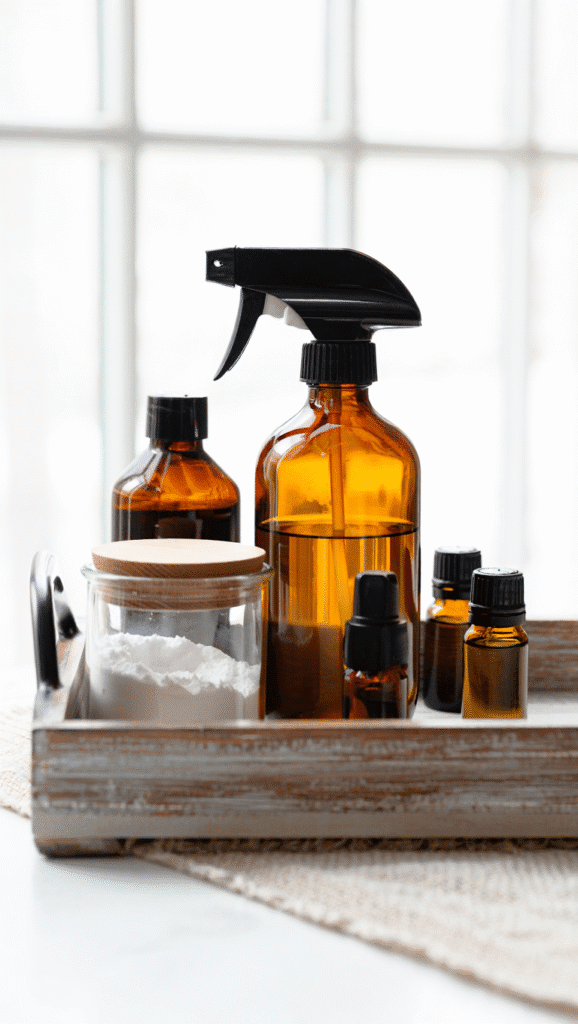
Now, for my favorite part, creating your non-toxic cleaning kit!
Transitioning to sustainable home essentials doesn’t mean purchasing countless expensive products. In fact, just five ingredients form the cornerstone of most DIY natural cleaning solutions:
- Baking soda: Perfect for gentle abrasive cleaning, deodorizing, and tackling tough grime.
- White vinegar: A powerful disinfectant and grime fighter, ideal for glass, tile, and general surfaces.
- Castile soap: An incredibly versatile, biodegradable soap safe for nearly every cleaning job.
- Alcohol (isopropyl): Excellent for disinfecting surfaces without harmful residues.
- Essential oils: Add antibacterial properties and natural fragrances (think lavender, lemon, or tea tree).
For further insights and detailed instructions on how these simple ingredients can create highly effective cleaners, see my post How To Create A Non-Toxic Cleaning Kit With Just 5 Ingredients.
Additionally, consider adding a few optional natural ingredients like hydrogen peroxide for disinfecting, citric acid for tackling mineral deposits, or borax (used cautiously) for deeper cleaning tasks.
Don’t forget to stock up on reusable cleaning tools like microfiber cloths, amber glass spray bottles, and reusable scrub brushes to fully embrace sustainable practices.
Room-by-Room Natural Cleaning Swaps
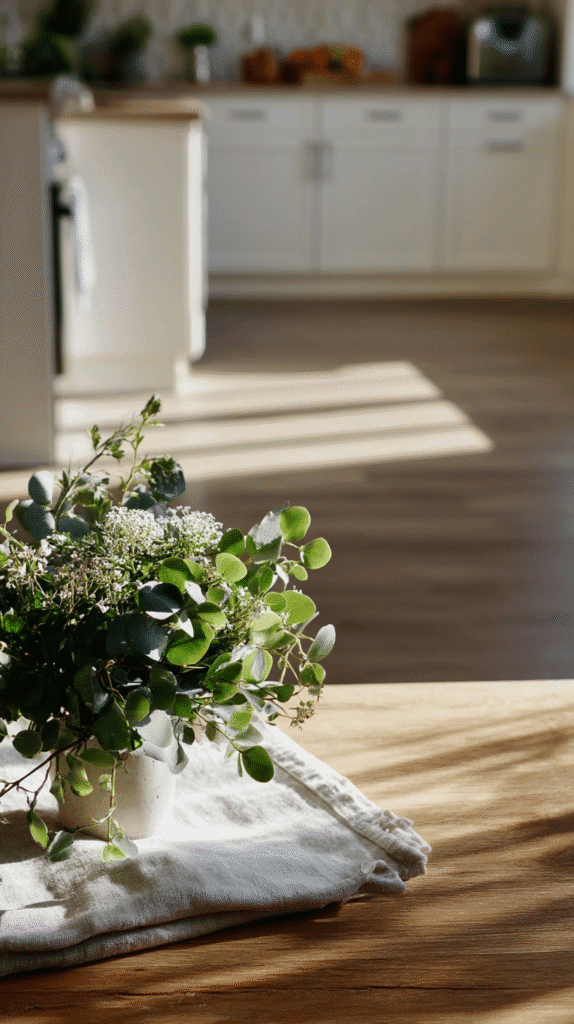
With your new cleaning kit ready, let’s transform each space step by step.
Kitchen
Replace chemically-loaded sprays with a simple DIY all-purpose cleaner: just equal parts vinegar and water, then add a few drops of lemon essential oil.
This blend tackles grease and germs beautifully, leaving surfaces truly fresh.
For dishes, choose a non-toxic dish soap to prevent chemical residues on your plates and utensils. Also, try a homemade baking soda paste with castile soap to scrub stubborn stovetop stains effortlessly.
Take it further with 18 Non Toxic Kitchen Essentials for a Healthy Lifestyle.
Bathroom
Bathrooms don’t need aggressive chemicals to be clean. Instead, a simple vinegar spray tackles tiles and mirrors efficiently.
Make your own soft scrub for sinks and tubs with baking soda and castile soap, and keep mold away naturally with a tea tree and vinegar spray, no bleach required. For more tips on detoxifying your bathroom see my post How To Detox Your Bathroom with Non Toxic Swaps.
Laundry
Laundry is often overlooked when switching to natural products. Replace conventional detergents with eco-friendly brands or soap nuts for a chemical-free laundry routine.
Add wool dryer balls to your dryer instead of synthetic sheets, they naturally reduce static and wrinkles.
For tackling stubborn stains without harsh chemicals, opt for fragrance-free, enzyme-based removers.
How To Stick With It—Even On Busy Weeks
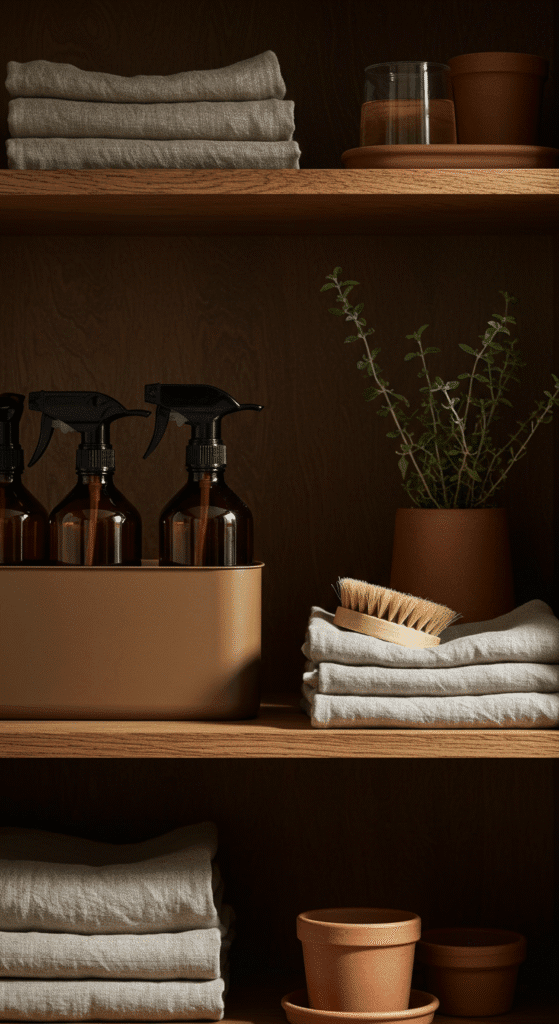
Creating your new non-toxic routine doesn’t end after this weekend detox, it’s about establishing sustainable habits. Here’s how I keep things manageable:
- Minimalist Cleaning Caddy: Assemble a small cleaning caddy for each floor or main area, ensuring you have everything ready at hand.
- Gentle Rhythm: Commit to simple daily tasks like quick countertop wipes or daily sweeping to maintain cleanliness easily. Schedule deeper cleans weekly or monthly, but be realistic about your available time.
- Smart Organization: Even in limited spaces, neatly organizing your supplies in labeled bins or small shelves makes your routine smoother and more enjoyable.
- Family Involvement: Share cleaning responsibilities with partners or children. Teaching your family about sustainable living is a valuable lesson and reduces your workload significantly.
Conclusion: A Weekend That Shifts Your Whole Home
By Sunday evening, you’ll likely feel lighter, healthier, and more aligned with your eco-friendly home cleaning goals.
Remember, the shift to a non-toxic cleaning routine isn’t an overnight perfection project. It’s a gentle evolution toward a safer, cleaner home.
Celebrate every step you take and build momentum by choosing what feels easiest and most exciting first.
